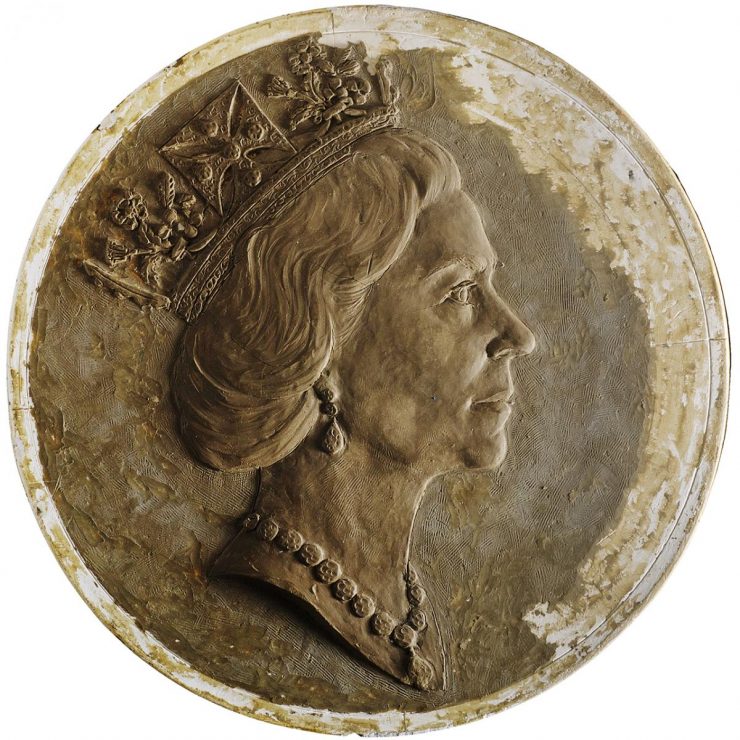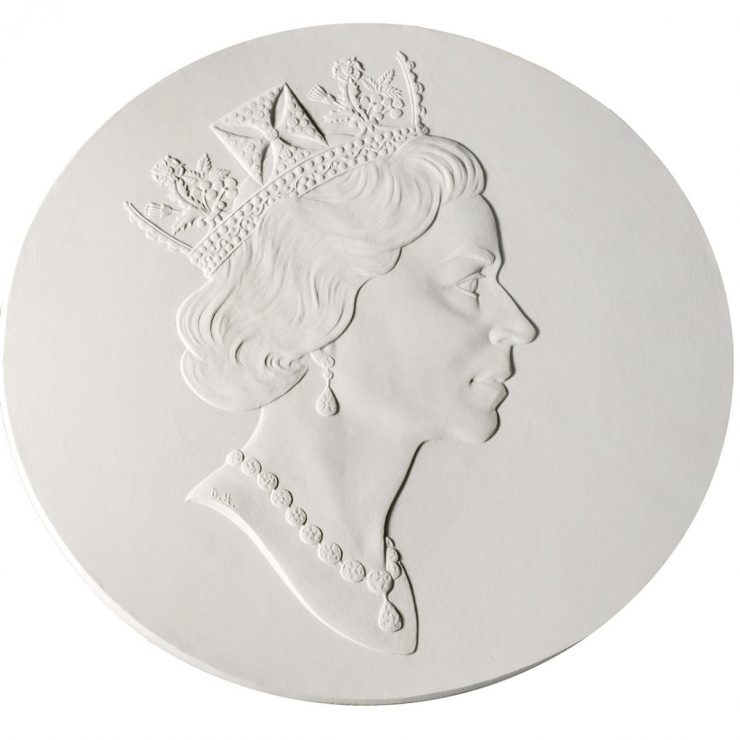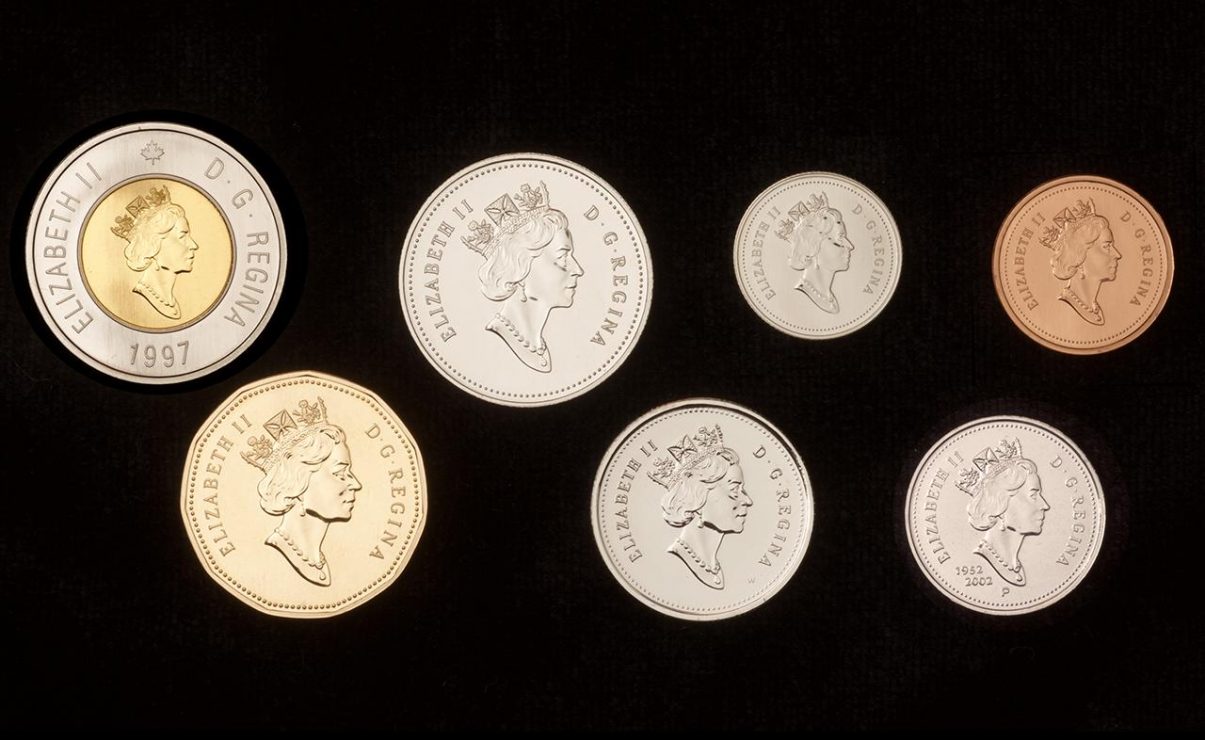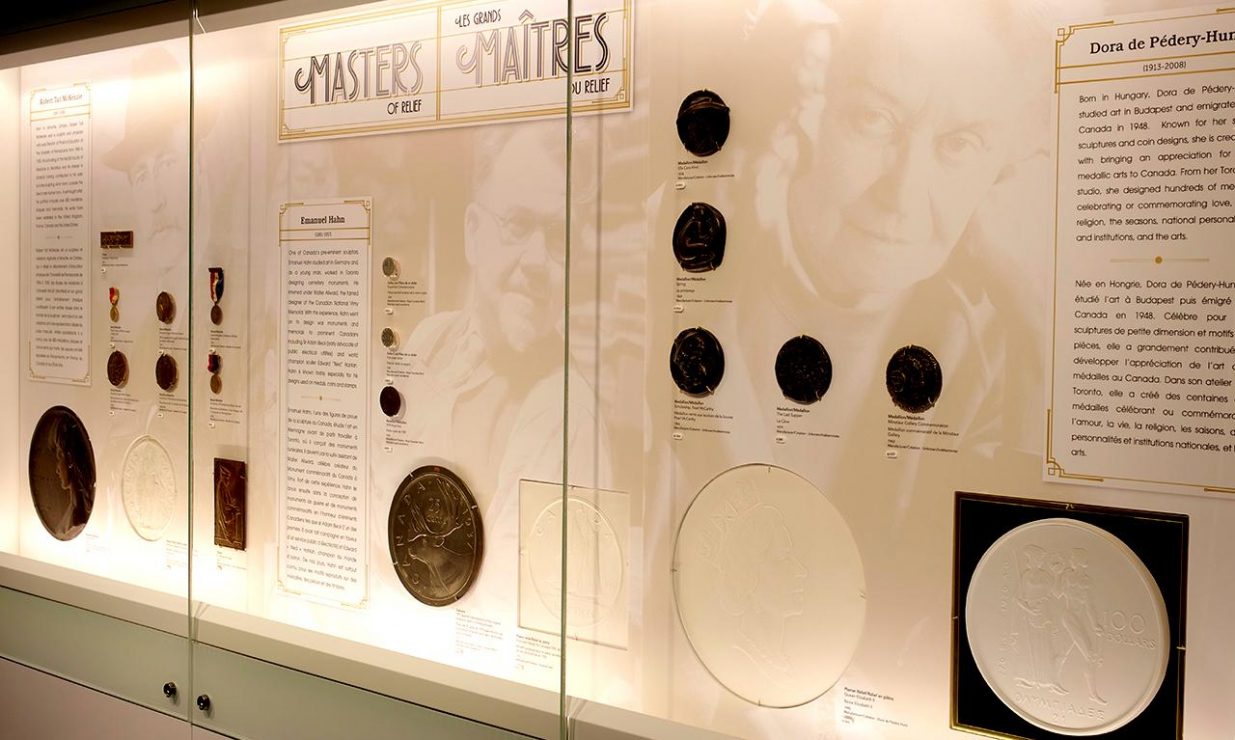Sculptor Dora de Pédery-Hunt
You will not see Dora de Pédery-Hunt’s signature on any coin, but you will see her initials on the Queen’s shoulder.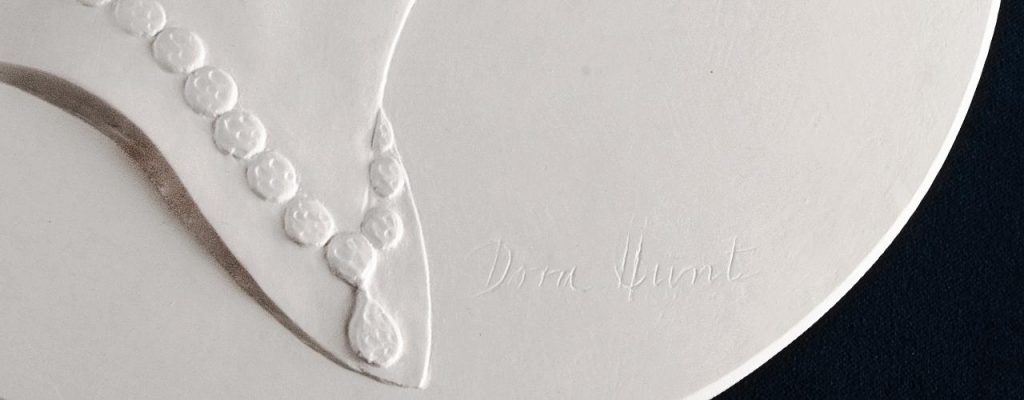
Limited Edition plaster reproduction of working model, #21 of 275. (NCC 2009.020.003)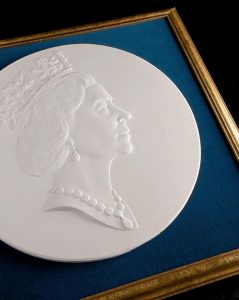
Dora de Pédery-Hunt’s work is as familiar as the change that jingles in your pocket. In all likelihood, you have come in contact with her work while using coins to pay for your morning cup of coffee. Dora de Pédery-Hunt was the first Canadian artist to design and sculpt an effigy of Queen Elizabeth II for coinage. Incidentally, this was the first time someone other than a British citizen had designed an official depiction of Queen Elizabeth II for this purpose.
When the Royal Canadian Mint (RCM) selected Dora’s design, she painstakingly began working on a clay model. All of the details had to be carefully considered, as the depth of the relief had to be suitable for producing coins. This model was then captured in plaster, where additional refinements could be made. Any errors could easily be corrected at this stage with the addition of more plaster. The size of the plaster is usually several times larger than the actual coin in order to capture all of the fine details.
At the time, there were many steps between the plaster model and the production of coins. Today, the process has been significantly refined. The plaster model is scanned in 3D and any final corrections or enhancements can be made digitally. Guided by this digital file, an engraving machine cuts the design into a piece of steel at the correct size of the coin. Known as a reduction punch, this piece of steel is then used to make the dies which will actually strike the coins. The tremendous pressure used to strike the coins wears down the dies, so the mint will periodically use the punch to create new dies.
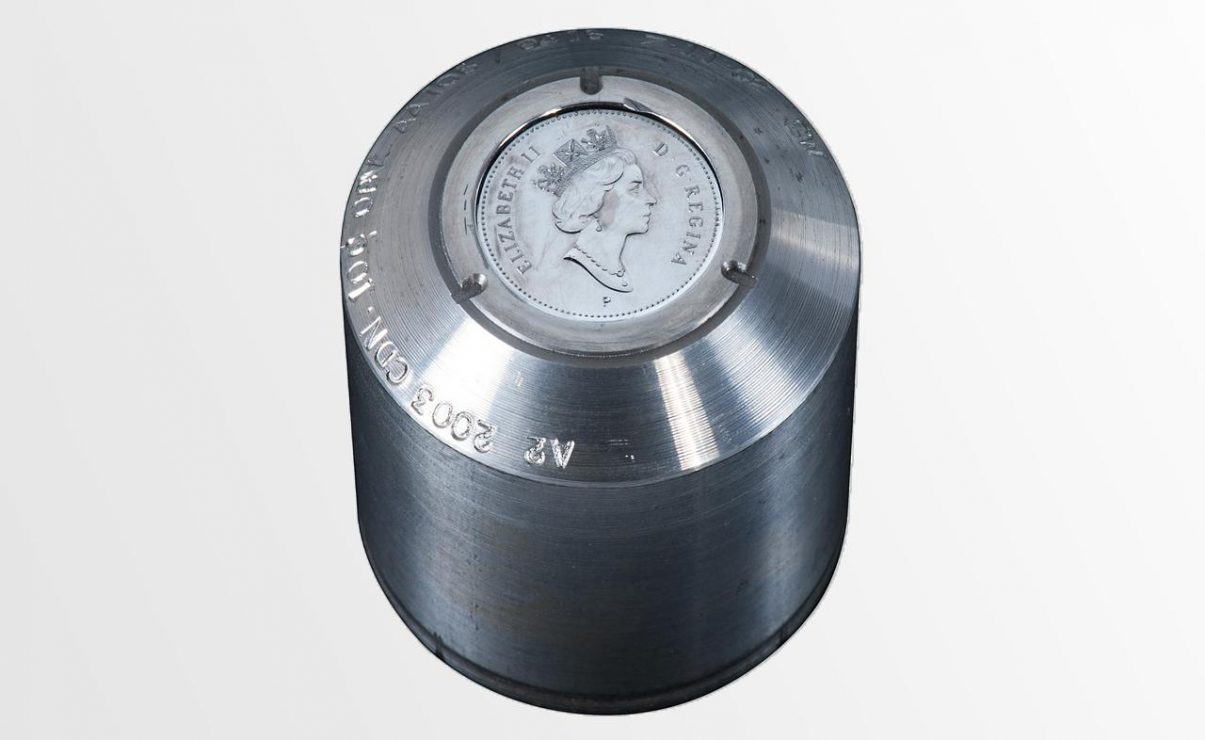
In 1999, the “P”, under the portrait on this punch, was added by the RCM to indicate a change in metal from nickel to multi-ply plated steel. (NCC 2010.058.006)
This portrait has appeared on all Canadian coins minted between 1990 and 2003.
The Museum Blog
New Acquisitions
By: Paul S. Berry
To distinguish the new production from that of 1936, a small impression was added to the reverse dies, creating a raised dot on coins struck from those tools.
The Bank-NOTEable Woman is Here!
By: Graham Iddon
Even if you’re not familiar with Viola Desmond’s story, it will likely become clear that the theme of this note is human rights and social justice.
Unpacking the Collection 7
By: David Bergeron
Canadian waters have also claimed their fair share of treasure ships.
Before the Erebus
By: Graham Iddon
Now you might wonder just how a museum specializing in economics and currency expects to interpret the history of a legendary arctic explorer—through money, of course.
Decoding E-Money Is Here
By: Graham Iddon
Now that we are again back in our house, we’ve invited one of our wandering exhibitions home for a visit: Decoding E-Money.
The Bank of Canada Museum Goes International
By: Ken Ross
Every year the conference of the International Federation of Finance Museums (IFFM) draws museum directors from five continents to a get-together aimed at sharing best-practices and keeping up with the latest trends in the world of financial museums. This year was the Bank’s first opportunity to attend the conference with a museum in fully-operational mode.
A Curator’s Favourite Task
By: David Bergeron
I have several key responsibilities to meet the requirements of my job. None of them is more gratifying than conducting research about the incredible artifacts in the Bank’s collection.
